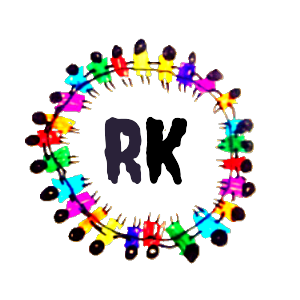Learning TypeScript effectively involves a structured approach that builds from basic to advanced concepts. Here’s a comprehensive outline to guide your learning journey:
1. Introduction to TypeScript
- Overview of TypeScript: Learn about TypeScript’s history, its purpose, and why it’s used.
- Setting Up TypeScript: Install TypeScript using npm, set up a development environment (VSCode is recommended), and understand the TypeScript Playground for practice.
2. Basic TypeScript
- TypeScript Basics: Understand the syntax and differences from JavaScript.
- Hello, World!: Write your first TypeScript program.
- Type Annotations: Learn about basic types (
string,number,boolean,any), type inference, and explicit type annotations.
3. TypeScript Configuration
- tsconfig.json: Understanding and configuring the TypeScript compiler options using
tsconfig.json. - Compilation: Compiling TypeScript code to JavaScript using the TypeScript compiler (
tsc).
4. Basic Types
- Primitive Types: Learn about
string,number,boolean,null,undefined,symbol, andbigint. - Arrays and Tuples: Type annotations for arrays and tuples.
- Enums: Using and understanding enums.
5. Functions
- Function Types: Specifying types for function parameters and return values.
- Optional and Default Parameters: Working with optional and default parameters.
- Rest Parameters: Using rest parameters in functions.
- Function Overloads: Defining multiple function signatures.
6. Object Types
- Interfaces: Defining and implementing interfaces.
- Type Aliases: Using type aliases for complex types.
- Intersection and Union Types: Combining types using intersection and union.
7. Classes and Inheritance
- Classes: Creating classes, constructors, and member variables.
- Inheritance: Extending classes and using the
superkeyword. - Access Modifiers: Understanding
public,private,protected. - Readonly Properties: Defining properties that can only be set once.
- Abstract Classes and Methods: Creating and using abstract classes and methods.
8. Advanced Types
- Advanced Type Inference: Understanding how TypeScript infers types.
- Mapped Types: Using mapped types for transforming types.
- Conditional Types: Creating types that depend on other types.
- Utility Types: Using built-in utility types like
Partial,Required,Readonly,Record,Pick, andOmit.
9. Generics
- Generic Functions: Creating functions that work with any type.
- Generic Classes and Interfaces: Using generics in classes and interfaces.
- Constraints: Adding constraints to generics.
10. Modules
- ES6 Modules: Importing and exporting modules.
- Namespaces: Using namespaces for organizing code.
- Module Resolution: Understanding how TypeScript resolves modules.
11. Asynchronous Programming
- Promises: Using promises in TypeScript.
- Async/Await: Writing asynchronous code with
asyncandawait. - Typing Asynchronous Functions: Specifying return types for asynchronous functions.
12. TypeScript with JavaScript Libraries
- Declaration Files: Using and writing declaration files (
.d.tsfiles). - DefinitelyTyped: Installing and using type definitions from DefinitelyTyped (
@types).
13. Integrating with Build Tools
- Build Tools: Using TypeScript with build tools like Webpack, Gulp, or Grunt.
- Transpiling: Configuring TypeScript to work with Babel for transpiling.
14. Testing TypeScript
- Unit Testing: Writing unit tests for TypeScript code using frameworks like Jest or Mocha.
- Type Checking: Using TypeScript’s compiler for type checking during testing.
15. Advanced Topics
- Decorators: Using decorators for meta-programming (experimental feature).
- Mixins: Creating and using mixins.
- Module Augmentation: Extending and augmenting modules.
- Advanced Type Manipulation: Using complex types and type manipulations.
16. Best Practices
- Code Quality: Enforcing code quality with ESLint and TSLint.
- Code Style: Adopting a consistent code style (Prettier can help).
- Refactoring: Techniques for refactoring TypeScript code.
17. Project-Based Learning
- Simple Projects: Start with small projects like a to-do list, calculator, or simple game.
- Incremental Complexity: Move on to more complex projects like a REST API, single-page application (SPA), or an e-commerce platform.
18. Continuous Learning
- Community Engagement: Join TypeScript communities on Stack Overflow, Reddit, or Discord.
- Stay Updated: Follow TypeScript-related blogs, podcasts, and news.
- Advanced Resources: Read advanced books and tutorials, such as “Programming TypeScript” by Boris Cherny and “Effective TypeScript” by Dan Vanderkam.
By following this outline, you’ll build a solid foundation in TypeScript and progressively advance your skills through practical application and continuous learning.

Leave a Reply